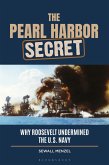By September 1944, Allied forces had broken out from the Normandy beachheads, liberated Paris, and found themselves poised on the German border. As this offensive gained momentum, Patton and Montgomery, hoping to exploit the enemy's temporary weakness in the West, concocted their own alternatives to Eisenhower's broad front strategy. Each proposed a single thrust aimed directly into the German heartland, designed to bring the troops home by Christmas. This study examines this so-called broad front-single thrust controversy and concludes that the idea of early victory was wishful thinking--a product of the erroneous and dangerous assumption that the Nazi regime was already tottering on the brink of collapse. Precisely because of its lightning pace, the Allied advance resulted in severe logistical problems, limiting Patton's proposed operation to only ten combat divisions, while Montgomery's closer proximity to the coast might have allowed for as many as sixteen. But it should have been obvious that either thrust faced certain destruction against the 250 divisions still fielded by the Wehrmacht on all fronts in September. In light of this substantial German military capacity, despite serious losses and strategic setbacks, the single thrust could not have been a decisive war-ending maneuver. In fact, Andidora argues, it could not even have provided for its own security against the forces that would have coalesced against it. Rather than unnecessarily prolonging the war, as some have argued, Eisenhower's decision to stay the strategic course probably averted a military disaster.









